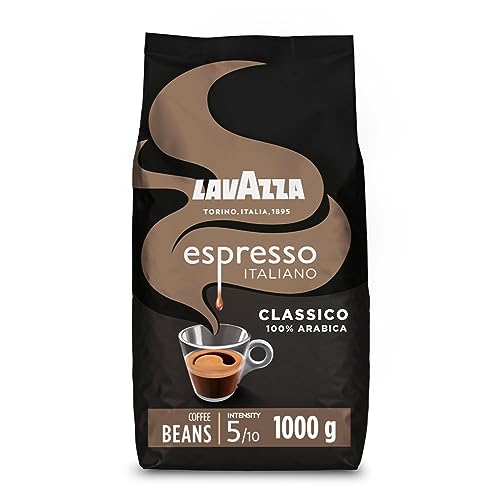Starbucks Coffee Beans 1kg
Starbucks was a cozy café located in Seattle Washington prior to when it became famous for its peppermint Mochas and red holiday cups. The founders of the company were focused on selling whole bean coffee, but they didn't realize the potential of espresso drinks.
The situation changed when Schultz stepped in. He was determined to demonstrate his roasting and mixing abilities.
Origin
Starbucks coffee beans travel an extensive, winding route before they get to your cup. Coffee is cultivated almost exclusively in the Coffee Belt. This area extends across the globe between the Tropics Cancer and Capricorn. The climate, soil, and the culture of each region influence the taste of the beans. Starbucks sources its coffee beans from more than 30 countries.
Starbucks coffees are mainly produced in Latin America, Africa and Asia-Pacific. These regions are known for their full-flavor, balanced of acidity and weight. Starbucks also sources coffee from St. Helena in the South Atlantic Ocean, a volcanic tropical island paradise.
The Starbucks's coffee beans are meticulously roast to perfection, which gives them the perfect flavor and smooth texture. The coffee beans are ground into a fine powder, and ready to be brewed. The powder is then mixed with water and poured into a cup, creating a delicious cup of espresso. The result is a cup that is full of flavor and energy.

While most Starbucks coffees are blends of different beans, there are numerous kinds of single-origin varieties available at the chain's stores. The company's single-origin coffees offer a wide range of flavors that include sweet and nutty fruity, chocolatey, and sweet. Some single-origin beans are certified organic.
Starbucks's coffee is sourced from all over the world, but they must meet certain standards to qualify as special. Specialty coffee first came into use in the 1980s, when roasters and cafes began to experiment with lighter roasting and manual methods. Starbucks hasn't started sourcing their coffee with these standards in mind however, it has since adopted some of them.
Starbucks also strives to improve the quality of life for those who grow its coffee. It offers its farmers a higher price above market price and encourages them to invest in their communities. It also promotes sustainability and works to reduce wastage. This has resulted in the creation of new techniques for coffee cultivation and practices that safeguard the environment.
Roast
Starbucks roasts beans in large quantities and buys beans in large quantities. The process of roasting takes from 10 to 15 minutes and the result is that the beans are dark roasted. Dark roasted beans have a rich flavor, and a full body. The beans are ground, then sent to stores and supermarkets in the form coffee grind. Most of the time, this ground coffee is not ideally suited for making the most delicious cup of coffee because it already has a bitter taste. This is the reason why many people add a lot of sugar, cream, flavorings, milk, whipping cream and more to their cup of coffee. This won't mask the bitterness in the coffee, but it does make the drink more appealing.
When the beans are placed into the roaster they begin to steam because of their internal moisture. Then comes the "first crack", an audible sound that signals us that the roasting process has actually begun. At this point the sugars begin caramelize and bound-up water escapes. During this time the structure of the bean is broken down and the oil begin to flow outward. This stage is the point where the majority of coffees are regarded as a city roast.
The roasted beans then cool and are then separated from any stones or other impurities that have been ejected from the roaster. They are then inspected by hand and bagged to be sold. Some beans might have a dark spot referred to as a quaker. These beans did not change colour and consequently taste burned, this is a common circumstance and does not mean the coffee is bad, but it can be a nagging surprise in your cup of coffee.
The beans are typically roast in small batches, sometimes as little as 20 pounds. These are known as "micro-lots". This is because each coffee is roasted according to specifications developed by a team of coffee masters at Starbucks headquarters. The team of coffee masters creates profiles that are used by all Starbucks(r) roasting facilities, around the globe. These profiles ensure that each cup of coffee is consistent and has a certain degree of body, flavor and aroma.
Flavor
Starbucks purchases their beans directly from the farm on which they were cultivated, in order to improve the quality of their beans and ensure ethical sourcing. For every kilogram of coffee beans sold, Starbucks plant a tree. The beans aren't labeled by their origin, but certain blends are. Veranda is from Sumatra; Komodo Dragon is from Indonesian and Anniversary is a mix between centeral american and African beans. The beans have a distinctive taste profile and create smooth cups with a delicate blend of sweetness and smoothness. kenco latte 1kg is a feast of symphony flavours that leaves a pleasant taste on the palate.
Weight
The weight of starbucks beans 1kg is determined by the blend. A Starbucks House Blend, for instance, weighs 14 oz per pound. A pound of Espresso-roast coffee at Walmart, however, weighs 16 oz. This translates into an increase of 67% at Starbucks in comparison to Wal-Mart.
Starbucks' Pike Place Roast is named for the iconic Seattle market. The light-medium roasting brings balance, sweetness, and smoothness to every cup. Blended using beans from Latin America, this blend is ideal for Americano and espresso. This blend is gourmet and comes with a FlavorLock package for protection and preservation of flavor. This is Starbucks the classic signature coffee. This is a great option for those who love coffee! Made from 100 percent Arabica beans. A great gift idea for all Starbucks customers.
